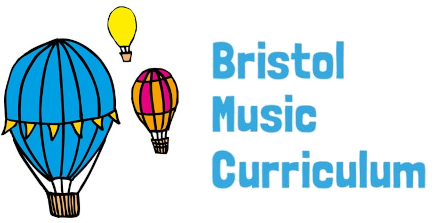Key Learning Objectives: To understand that music moves. between high and low pitches. To identify melodic shape To maintain a musical line in a 2 part song – melody/ostinato. Starter activity: Choose an activity from the Pitch and Vocal starter bank, questioning the pupil’s understanding of pitch so far. Main activity: Listening and response activity based on […]
Category: Unit 3
Year 4, Unit 3: Chronology – Lesson 6
Key Learning Objectives: To explore minimalism through a variety of media, manipulating sounds and media. To compose / notate / perform a minimalist composition. Starter activity: Listening and response exercise, based on the work ‘Changes’ by the contemporary Bristol composer John Pitts. Create a shifting pattern of actions, choosing five actions, repeating them until a good […]
Year 4, Unit 3: Chronology – Lesson 5
Key Learning Objectives: To respond to a piece of music with creative writing. To recognise changes in dynamics within a piece of music. To identify how a composer can orchestrate a simple theme in a variety of ways to create varying effects Listening focus: Listening and response exercise, based on the work ‘Firebird’ by the Russian […]
Year 4, Unit 3: Chronology – Lesson 4
Key Learning Objectives: To respond creatively to a piece of music. To suggest words to describe the mood of a piece of music, considering how the composer may have wanted the listener to feel. To identify instruments and to consider how their timbre suggests tone colours. Listening focus: Listening and response exercise, based on the […]
Year 4, Unit 3: Chronology – Lesson 3
Key Learning Objectives: To follow a graphic score To know that staccato means detached. To recognise repeated rhythmic patterns. To compose and perform melodic phrases. Listening focus: Listening and response exercise, based on the work ‘Fossils’ by Camille Saint-Saëns, the twelfth movement of the musical suite ‘Carnival of the Animals’. Main activity: Focus on the rhythm of the main theme, noticing […]
Year 4, Unit 3: Chronology – Lesson 2
Key Learning Objectives: To listen to a piece of music and to consider and share emotional responses. To begin to understand independent part writing and layering of musical parts. To recognise music sung a capella (unaccompanied voices) Listening focus: Listening and response exercise, based on the work ‘Crucifixus’ by Antonio Lotti, an introduction to Baroque choral […]
Year 4, Unit 3: Chronology – Lesson 1
Key Learning Objectives: To learn about Renaissance instruments and to identify the differences and similarities to instruments today. To understand a piece of music is often written for a purpose and consider where it may have been performed. To listen carefully to a piece of music and use drama to respond creatively to it. […]
Year 3, Unit 3: Pitch – Lesson 6
Key Learning Objectives: To begin to understand that notes can move by step to form a scale. To further develop an understanding of intervals, exploring fifths. To listen carefully and perform partner songs as part of an ensemble Starter activity: Select an activity from the Pitch Starter Bank. Main activity: Introduce the degrees of a scale […]
Year 3, Unit 3: Pitch – Lesson 5
Key Learning Objectives: To further develop aural skills and understanding of how a melody moves. To work in small groups to ‘notate’ patterns of notes, using objects to mirror both rise and fall in pitch. Starter activity: Select an activity from the Pitch Starter Bank. Main activity: Representing note patterns: Listen to ‘Bristol Pitches’ and pitch pattern the […]
Year 3, Unit 3: Pitch – Lesson 4
Key Learning Objectives: To listen, explore and begin to learn ‘Fureem’. To recap that the distance between two notes is called an interval and use arms to mirror a rise and fall in pitch correctly. To understand how a triad is formed (notes built above one another to form chords). Starter activity: Select an activity […]
